The pot that Taro Okamoto saw and
exclaimed “What on Earth?!”
is recognized as the first Japan Heritage
in Niigata Prefecture!
The story ‘"What on Earth?!" Flame Pots and Snow Country Culture in the Shinano River Basin’ submitted by Niigata City, Sanjo City, Nagaoka City, Tokamachi City, and Tsunan Town was recognized as a Japan Heritage on April 25, 2016. This was one of the 19 newly recognized stories from among 67 stories proposed by municipalities nationwide. Japan Heritage is recognized and awarded by the Agency for Cultural Affairs, Govemment of Japan to stories that tell Japanese culture and tradition through the historical charm and characteristics of the region.



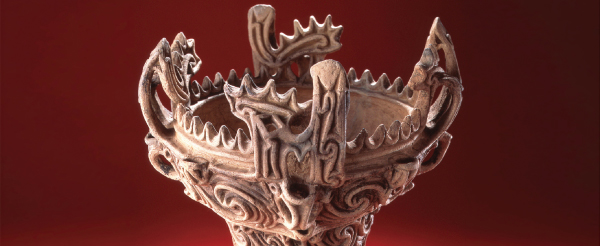
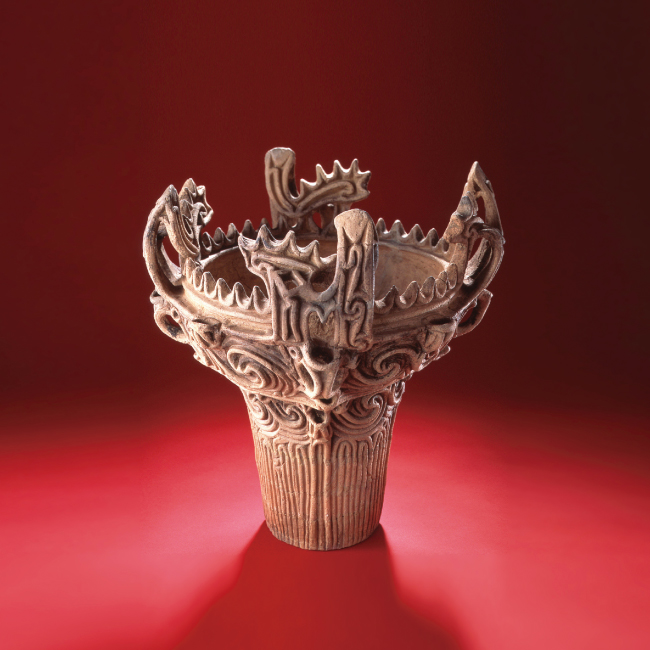
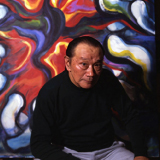
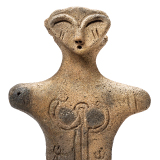
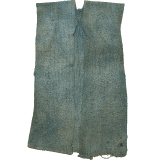
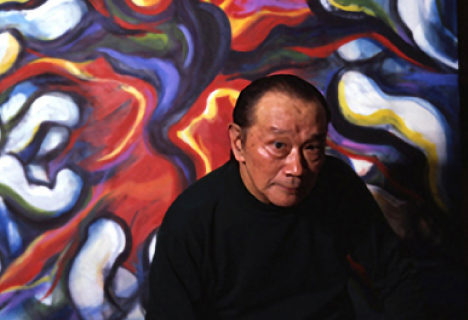 Flowing 367km from the south to the north of Niigata prefecture, the Shinano River is the longest river in Japan. The people who chose the massive basin of this river for their home over 13,000 years ago were the first in the world to start making pottery. With this began the Jomon period. Particularly in the upper river basin, archeological sites from this period are more concentrated than anywhere else in Japan. Blessed with abundant forests and water sources, the Shinano River basin became a treasure trove of flora and fauna. We can see evidence of the Jomon people living here in harmony with nature for 10,000 years.
Flowing 367km from the south to the north of Niigata prefecture, the Shinano River is the longest river in Japan. The people who chose the massive basin of this river for their home over 13,000 years ago were the first in the world to start making pottery. With this began the Jomon period. Particularly in the upper river basin, archeological sites from this period are more concentrated than anywhere else in Japan. Blessed with abundant forests and water sources, the Shinano River basin became a treasure trove of flora and fauna. We can see evidence of the Jomon people living here in harmony with nature for 10,000 years.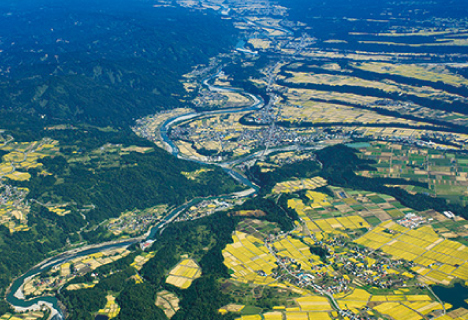 The people who made the flame pots lived in villages built on river terraces in the Shinano River basin. The majority of these settlements were near natural springs. The villages were built around a central clearing, forming a circular settlement of approximately 100m in diameter. About fifty pit dwellings were arranged in a horseshoe shape around the clearing, which was also used for ritualistic purposes. Burial pits have been found between the dwellings and clearing. In addition to this, there was a line of pits for storing nuts and other foodstuffs. On the outer edges of the settlement, there were waste pits for the disposal of old tools and other holes into which animals were driven for capture. Jomon village zoning was systematic and undoubtedly deliberate.
The people who made the flame pots lived in villages built on river terraces in the Shinano River basin. The majority of these settlements were near natural springs. The villages were built around a central clearing, forming a circular settlement of approximately 100m in diameter. About fifty pit dwellings were arranged in a horseshoe shape around the clearing, which was also used for ritualistic purposes. Burial pits have been found between the dwellings and clearing. In addition to this, there was a line of pits for storing nuts and other foodstuffs. On the outer edges of the settlement, there were waste pits for the disposal of old tools and other holes into which animals were driven for capture. Jomon village zoning was systematic and undoubtedly deliberate.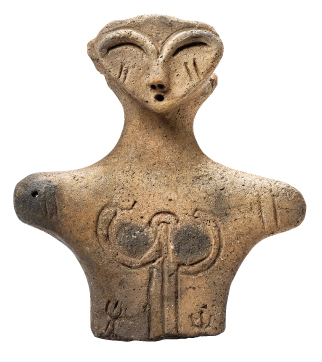 More than four hundred sites from the middle Jomon period have been discovered in the Shinano River basin. From this we know the scale and density of villages in this area were greater than that of anywhere else in Japan. A variety of ritual items such as clay figures and jade beads, from the same period as the flame pots, have been excavated from these sites. Such items are rare in the rest of Japan, making them a distinctive feature of the Jomon culture in this area. The landscape in parts of the Shinano River basin, such as Kiyotsu Gorge, Yagigahana, Mt. Yahiko, Mt. Kakuda, and many river terraces and lagoons, remains unchanged since the Jomon period. If you visit the remains of villages where the Jomon people lived, you can experience for yourself the landscape much as it was 5,000 years ago.
More than four hundred sites from the middle Jomon period have been discovered in the Shinano River basin. From this we know the scale and density of villages in this area were greater than that of anywhere else in Japan. A variety of ritual items such as clay figures and jade beads, from the same period as the flame pots, have been excavated from these sites. Such items are rare in the rest of Japan, making them a distinctive feature of the Jomon culture in this area. The landscape in parts of the Shinano River basin, such as Kiyotsu Gorge, Yagigahana, Mt. Yahiko, Mt. Kakuda, and many river terraces and lagoons, remains unchanged since the Jomon period. If you visit the remains of villages where the Jomon people lived, you can experience for yourself the landscape much as it was 5,000 years ago.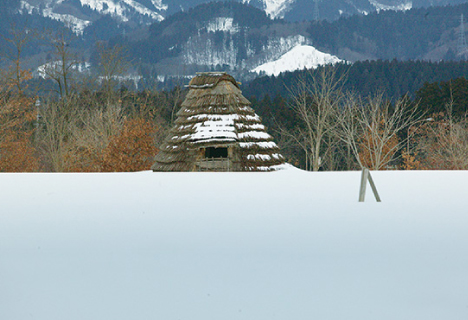 We can catch glimpses of the lifestyle of the Jomon people who created the flame pots through the wisdom of the Snow Country. A good example of this would be everyday items from the area. The knitted clothing called "angin" that the Edo period author Bokushi Suzuki wrote about in his book 'A Journey to Akiyama' (1831), is fabric made from knitted plant fibers. Although impressions of angin knit have been found on the bases of Jomon pottery throughout Japan, the only places it remained in use until recently are villages like Akiyama in the Shinano River basin. A lifestyle in harmony with nature, using skill and wisdom to make the most of the Snow Country's natural resources, continues there to this day. The people of this region have passed the Snow Country knowledge down through many generations. They are living in the midst of Jomon culture even now.
We can catch glimpses of the lifestyle of the Jomon people who created the flame pots through the wisdom of the Snow Country. A good example of this would be everyday items from the area. The knitted clothing called "angin" that the Edo period author Bokushi Suzuki wrote about in his book 'A Journey to Akiyama' (1831), is fabric made from knitted plant fibers. Although impressions of angin knit have been found on the bases of Jomon pottery throughout Japan, the only places it remained in use until recently are villages like Akiyama in the Shinano River basin. A lifestyle in harmony with nature, using skill and wisdom to make the most of the Snow Country's natural resources, continues there to this day. The people of this region have passed the Snow Country knowledge down through many generations. They are living in the midst of Jomon culture even now.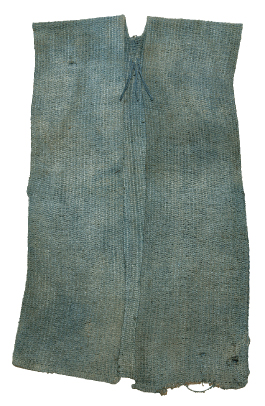 Since the Jomon period, the Shinano River and its tributaries have been rich fishing grounds. This is because the far reaching broadleaf forests feed nutrients into the Shinano River, helping to nurture the fish. Salmon born in the Shinano River system migrate to the sea, and then return to their river of birth to spawn. This has not changed since Jomon times. The salmon that return before the heavy snowfall were an important food source for the Jomon people. There are charred traces of what is thought to include salmon in some of the flame pots. Artifacts excavated from the Matoba site in Niigata City also tell the story of a flourishing salmon fishing industry in the Shinano River estuary. Since the distant past, in the Echigo province (modern day Niigata prefecture) salmon has been subject to taxation. In addition, knowledge of fishing tools has been passed down in each region of the Shinano River basin.
Since the Jomon period, the Shinano River and its tributaries have been rich fishing grounds. This is because the far reaching broadleaf forests feed nutrients into the Shinano River, helping to nurture the fish. Salmon born in the Shinano River system migrate to the sea, and then return to their river of birth to spawn. This has not changed since Jomon times. The salmon that return before the heavy snowfall were an important food source for the Jomon people. There are charred traces of what is thought to include salmon in some of the flame pots. Artifacts excavated from the Matoba site in Niigata City also tell the story of a flourishing salmon fishing industry in the Shinano River estuary. Since the distant past, in the Echigo province (modern day Niigata prefecture) salmon has been subject to taxation. In addition, knowledge of fishing tools has been passed down in each region of the Shinano River basin.